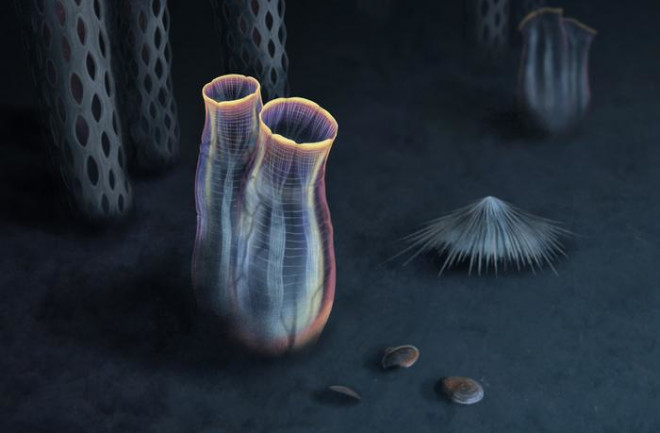In the landlocked state of Utah, within the Marjum Formation, paleontologists have made an exciting discovery—a fossil of a tunicate dating back 500 million years. Utah is situated in the Mountain West subregion of the Western United States.
Fossil of 500-Million-Year-Old Megasiphon Thylacos Reveals Ancient Tunicate Body Structure and Feeding Habits
The Megasiphon Thylacos fossil, estimated to be approximately 500 million years old, indicates that the fundamental body structure of tunicates had already emerged soon after the Cambrian Explosion. This discovery offers valuable knowledge regarding the sedentary, filter-feeding habits of early tunicates, as well as their transformation from larval forms resembling tadpoles. Megasiphon thylakos resided on the seafloor, engaging in filter feeding throughout the day, before becoming preserved in the fossil record for an impressive span of 500 million years, including the remarkable preservation of its soft tissues.
Discovering the Peculiar World of Tunicates: Unveiling the Ancient Lineage and Unique Lifestyle of Over 3,000 Sea Squirt Specie
Found in the depths of the ocean, tunicates stand out as some of the most peculiar lifeforms on Earth. With over 3,000 existing species, these marine invertebrates, commonly referred to as sea squirts, have a distinct lifestyle. They spend the majority of their lives affixed to various surfaces, such as docks, rocks, or the hulls of boats. These intriguing creatures predominantly inhabit shallow water habitats across the world’s oceans. Remarkably, the evolutionary lineage of tunicates traces back a staggering 500 million years, unveiling a rich and ancient history.
Diverse and Adaptable Tunicates
Tunicates exhibit remarkable diversity, taking on various shapes, colors, and characteristics. With fish seeking refuge within them, they possess the ability to assume different forms at will. Typically, adult tunicates boast a barrel-shaped body and feature two siphons protruding from their form. One siphon employs suction to draw in water and food particles, while the other expels the filtered water back out. This intricate feeding mechanism enables tunicates to maintain their unique nature and thrive in their surroundings.
Key takeaways for competitive examinations
- One who studies the history of life on Earth through the fossil record is: Paleontologist
Find More Miscellaneous News Here




 Weekly Current Affairs One Liners 08th t...
Weekly Current Affairs One Liners 08th t...
 Which Indian City is Known as the Footwe...
Which Indian City is Known as the Footwe...
 Which Desert is known as the Cold Desert...
Which Desert is known as the Cold Desert...







